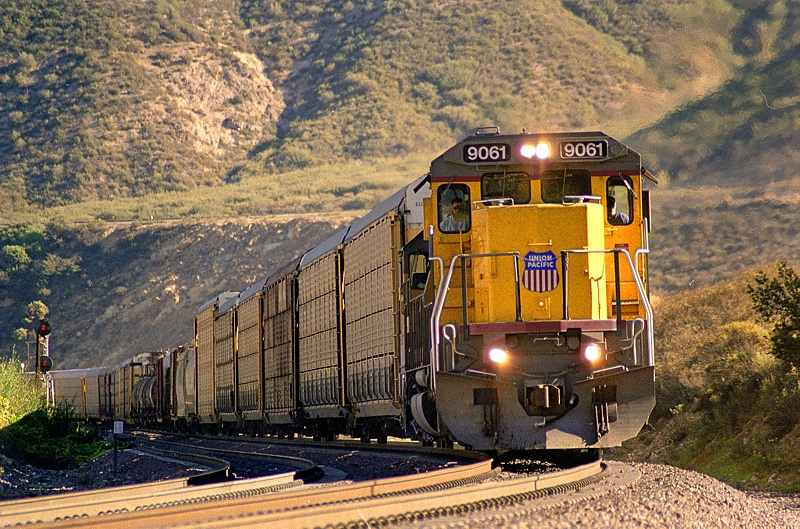by Hubert Marleau, Market Economist, Palos Management
On Thursday, the S&P 500 was back to where it was in January 2019 and officially in a bear market. All other stock markets did worse. For example, the TSX is back to where it was in February 2016 and the FTSE 100 in November 2011. The lost value amounts to trillions of dollars.
From the high registered on February 19, 2020, the S&P 500 has fallen 26.7%. The bearish sentiment voraciously ate large pieces of all the sub-sectors of the economy. The table below shows the performance of the 11 key sectors of the S&P 500.
The numbers for the Canadian stock markets are uglier. The TSX peaked on February 21, 2020 at 17970. On Thursday, the index had lost 30.4% of its value. Unfortunately, the Canadian economy is skewed toward highly sensitive and cyclical components like Financials, Energy and Materials.
The violent blows of the coronavirus and oil shock to the outlook on the economy was too much for myopic investors who have a short timeline for predicting health, fiscal and monetary remedies. Risk tolerance is an important ingredient in the stock market. A study of 700 Americans by MagnifyMoney showed that about 20% of the people surveyed would be compelled to give up on stocks after a 5% drop and that most people cannot stomach a 10% market decline. Only 17% can handle a 20% decline and fewer than 10% can tolerate a 30% dip.
The problem is that people cannot cope with volatility, in spite of the fact that the ups and downs in stock prices are normal and that in the fullness of time, factoring all corrections, the S&P has had an annual rate of return of about 8%.
Markets are powerful and they use their prowess to dictate to governments and their agencies that they should do something potent. Governments are not far-seeing and efficient. They tend to wait until public opinion has had enough of waiting. That comes about when the currency, commodity, bond and stock markets demand “shock and Awe”. The markets had had enough on Thursday. The central banks and the government got the message from the wisdom of the crowd.
It insisted on several lines of action: full bazooka-like liquidity protection from the central banks; targeted fiscal measures to subsidize those who are financially hurt; broad programs to spur aggregate demand; unlimited help to flatten the curve of infections; aid science to find an immediate treatment or develop a vaccine. In this connection, the world is willing to accept an economic contraction because unfortunately it is part of the cure for an epidemic of communicable diseases as long as the authorities are willing to smother problems with money. Welcome to Modern Monetary Theory (MMT)--like it or not!
The only way to deal with violent blows is with “awe and shock”. That is to act courageously to protect economies from unfolding ailments. The time is now to act boldly and turn theoretical ideas into practical policy considerations. What better moment than now to try out targeted fiscal measures and big fiscal packages funded with long term zero cost money or bank reserves. It does not take a genius to understand that the time is ripe for maximizing the effectiveness of fiscal and monetary policy. The cost of doing nothing is greater than the cost of providing something.
Otherwise responsible people and businesses will be unable to withstand the inevitable downturn or the lengthy recovery. For many businesses, lead times have increased and shortage of goods is compounded by the shortage of air and ocean freights. The scale of the support must equal the scale of the supply/demand disruption. It may prove to be expensive in absolute terms but the servicing cost is nil. Thus, I expect that over the next few weeks, investors will witness various measures to soften the economic imbalances, the exogenous shocks and the lack of liquidity that always accompany violent blows.
MMT has started--Big Time! Sitting in my rocking chair in my country home looking at the majestical Saint Lawrence river away from the madding crowd, I saw a capitulation last week as investors were crowding the exits. On Wednesday and Thursday something weird happened,
everything was on sale for cash. All world-wide asset prices were falling with unsustainably wide bid-ask spreads—the market had lost its logic. The discipline of statistics and application of mathematics may not be perfect, yet they are good enough to check the gap between normal rationality and panicky emotion.
The CBOE Volatility Index, a gauge of fear, spiked to 75 on Thursday after closing near or above 40 for 10 days. On February 19, the Vix was low at 14. Interestingly, one's portfolio became uninsurable and way too expensive to cover one’s fear. The alternative option was to indiscreetly sell. That’s not supposed to happen when the cost of capital to run the economy is declining and the yield spreads between long and short duration are widening. From February 19 on, the ten-year bond yield decreased 76 bps to 0.80% while the yield spread between ten and two year bonds increased 30bps to 0.36%. These large and abrupt moves were so remarkable that they challenged the principles that normally and historically govern a well functioning market.
The central banks had to intervene to save the day with a massive injection of money and governments announced huge fiscal packages. Everybody pitched in—the U.S., Canada, the U.K., Japan, China, the E.U. It shows that we do not have a globalization crisis because . international cooperation still works when one is threatened.
History is clear on this one that when capitulation happens, those in the know and in power are compelled to react in a necessary manner. On Thursday, the recession odds were above 80%. The chances are much lower now.
One only has to look at the changing shape of the yield curve. Maybe we are not going to get into a deep recession and if we do it may be short and sweet. Several economists believe that we might get a temporary global growth recession in earnings, reminiscent of 2015. The fact is that the cost of the supply disruption and demand reduction will be partially paid with incremental government spending that will be funded with either newly created money or by the capital markets at near-zero interest rates. Additionally, the whole exercise probably won’t raise inflation because we live in a world of abundance.
Large segments of the economy will be receiving over time, a triple-boost from a deceleration in the cost of money and capital, from a sharp decrease in oil prices and from rising government spending and tax cuts. Meanwhile, the central banks will keep the money system flush until the course of the pandemic proves to be temporary. As a rule, pandemic fear ends when there are signs of recovery.
Don’t panic! If you are incapable of tolerating pain, slowly sell your tax-loss assets. But, if you are wired to fight and be a contrarian even if it's extraordinarily painful, step in as value reappears. If not sure where you stand on those questions, as most humans are, stay put.
I have no idea how much worse things are going to get biologically or economically---but I know that the market will know first. It only needs a glimmer of hope and it will see when the pandemic has run its course.
The stock market will be great again and head north. It is much more intelligent to choose stocks for the next cycle. Chaos theory teaches that the disorder operates inside a frame.
-
-
- In 2019 Americans spent around $2.0 trillion on recreation, food and accommodation and transportation services, representing about 9% of N-GDP. That comes out to $5.5 million a day. Assuming that the imposed restrictions and lockdowns will negatively affect 50% of the aforementioned expenditures for a period of two weeks, almost $40.0 billion worth of demand would disappear. The U.S. government has earmarked $50 billion to fill the anticipated hole. It is assumed that if the $50.0 billion is insufficient, the government aid would rise.Source: Bureau of Economic Analysis
- Anatole Kaletsky, founder and co-chairman of Gavekal Dragonomics, an economic consulting company, and chairman of the Institute for New Economic Thinking wrote an excellent article in Project Syndicate and it is worthy of consideration: “Covid-19 by the Numbers” .
-
The first paragraph of the article is below.
LONDON-- “ One death is a tragedy; a million deaths is a statistic. Whether or not Stalin actually said this, it is a cruelly accurate description of economic reality. The global panic about the new coronavirus, COVID-19, is understandable, because every premature death is a human tragedy. But, as callous as it may sound, the economic and political impact of this pandemic will ultimately be determined by the numbers. Fortunately, in this case, the relevant ones are developing in a much less alarming way than panicked media might suggest”.
In the second paragraph, he explains that “ It is all but certain that the number of Americans identified as suffering and dying from COVID-19 will escalate rapidly, with financial and economic sentiment responding accordingly, before public opinion in the U.S. and around the world starts to calm later in April. But, whatever the precise timing, the statistical evidence in the two months since the outbreak began suggests that COVID-19 will end up having a negligible effect on health and mortality globally, except in China’s Hubei province, where the epidemic started.”
Copyright © Palos Management

















